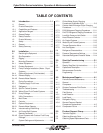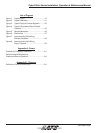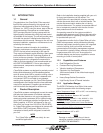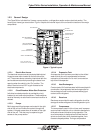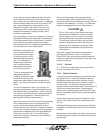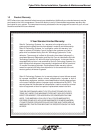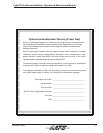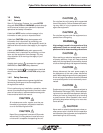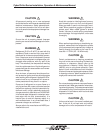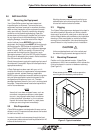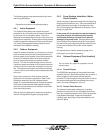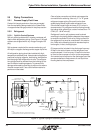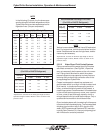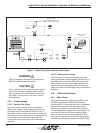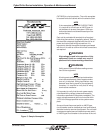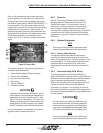
(©October, 2006)
CyberChiller Series Installation, Operation & Maintenance Manual
1-7
CAUTION
All personnel working on or near equipment
should be familiar with hazards associated with
electrical maintenance. Safety placards/stick-
ers have been placed on the unit to call atten-
tion to all personal and equipment damage haz-
ard areas.
CAUTION
Ensure the unit is properly phased. Improper
phasing can cause severe damage to the com-
pressor.
WARNING
Refrigerant (R-22 or R-407C) is used with this
equipment. Death or serious injury may result if
personnel fail to observe proper safety precau-
tions. Great care must be exercised to prevent
contact of liquid refrigerant or refrigerant gas, dis-
charged under pressure, with any part of the
body. The extremely low temperature resulting
from the rapid expansion of liquid refrigerant or
pressurized gas can cause sudden and irrevers-
ible tissue damage.
As a minimum, all personnel should wear ther-
mal protective gloves and face-shield/goggles
when working with refrigerant. Application of ex-
cessive heat to any component will cause ex-
treme pressure and may result in a rupture.
Exposure of refrigerant to an open flame or a
very hot surface will cause a chemical reaction
that will form carbonyl chloride (hydrochloric/hy-
drofluoric acid); a highly poisonous and corro-
sive gas commonly referred to as PHOSGENE.
In its natural state, refrigerant is a colorless, odor-
less vapor with no toxic characteristics. It is
heavier than air and will disperse rapidly in a
well-ventilated area. In an unventilated area, it
presents a danger as a suffocant.
Always refer to the manufacturer's MSDS pro-
vided with the unit.
WARNING
Avoid skin contact or inhaling fumes from any
acid formed by burn out of oil and refrigerant.
Wear gas mask if area is not thoroughly venti-
lated. Wear protective goggles or glasses to
protect eyes. Wear rubber gloves to protect
hands. Use care to avoid spilling compressor
burnout sludge. If sludge is spilled , clean area
thoroughly.
WARNING
When performing soldering or desoldering op-
erations, make certain the refrigeration system
is fully recovered and purged and dry nitrogen is
flowing through the system at the rate of not
less than 1-2 CFM (.03 - .06 M³/minute).
CAUTION
Certain maintenance or cleaning procedures
may call for the use and handling of chemicals,
solvents, or cleansers. Always refer to the
manufacturer's Material Safety Data Sheet
(MSDS) prior to using these materials. Clean
parts in a well-ventilated area. Avoid inhalation
of solvent fumes and prolonged exposure of skin
to cleaning solvents. Wash exposed skin thor-
oughly after contact with solvents.
CAUTION
Do not use cleaning solvents near open flame or
excessive heat. Wear eye protection when blow-
ing solvent from parts. The pressure-wash should
not exceed 30 psig. Solvent solutions should be
disposed of in accordance with local and state
regulatory statutes.
CAUTION
Units must be kept in its normal installed posi-
tion. If the unit is not kept level and vertical,
damage to the unit's compressors will result.



